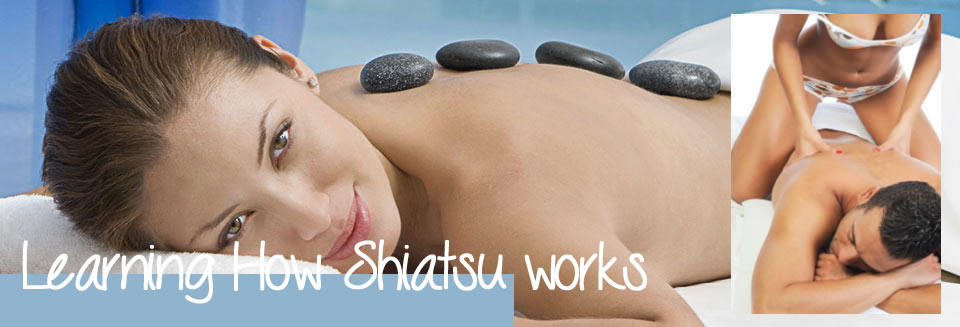yoga & health magazine
Learning How Shiatsu works
Bring in the new year - Yoga & health magazine's Introduction to shiatsu contains very important pointers that will help you learn the art of Shiatsu effectively; it also presents some important 'do's and don'ts' to consider when giving a Shiatsu treatment.
See commonly asked questions about Yoga
Therefore it is strongly recommended that you read it carefully before proceeding to Part One.
- Yin and Yang
- THE ABDOMEN TREATMENT
- Leg Pressure Points
- Preparing for a Shiatsu Session
- The Five Elements
- Shoulder pressure points
- THE STEP-BY-STEP SEQUENCE
- RESOURCES
- The origins of Shiatsu
- Techniques
- How to find the points
- POINTS TO REMEMBER
- How much pressure to use
- SELF-SHIATSU
- Choosing a school or practitioner
- SELF-TREATMENT
- Shoulders Treatment
- Vital organs
- Energy channels
- TREATING THE INDIVIDUAL
- DEVELOPING YOUR TECHNIQUE
- Energy in the hands
- Hara and breathing
- SELF-DEVELOPMENT EXERCISES
- Back of body treatment
- Front of leg pressure points
- Toe Treatment
- Tsubos
- Kyo and Jitsu
- Increasing your sensitivity
- Governing Vessel
- Forehead Massage

Kyo and Jitsu
When you locate a point, or Tsubo, and press into it, contacting the energy that lies under the surface, you will be aware of its particular quality. The terms Kyo and Jitsu are used to describe or classify the two extremes of qualities. Kyo is the quality of emptiness, indicating depletion, under activity or lack of local energy, and Jitsu describes a sense of fullness, excess, over activity or over sufficiency of Ki. They are relative rather than absolute values, used for comparison; and the conditions they describe are also dynamic, and always in a state of some degree of fluctuation, though some conditions can be very long-term. Distinguishing between whether energy is Kyo or Jitsu is very helpful, for it will help you to determine, first of all, what the existing situation is (diagnosis) and then what steps to take to remedy it (treatment). Pain or other evidence of disorder is often directly linked to the spot where imbalanced energy is detected in terms of Kyo or Jitsu, and can be directly treated there.
Kyo and Jitsu, as expressions of relative energy 'content', do not apply only between individual points, but also between different channels and the organ systems that go with them, as well as between different parts or zones of the body, and even between one whole person and another. Thus, in a particular person, the kidney meridian may be found to be the most Kyo; the lower body might be more Jitsu than the upper body; and the whole person could be judged to be relatively Kyo compared to most people - all these factors will influence the form of treatment you choose. Examples of the recognition and approach to such situations are given later, when we look at individual treatment.
Prices and Tuition
£50 for "First Session" Pilates or Pilates/Yoga or Yoga session, 1 1/2 -2 hours (where a consultation is involved). The first Pilates only or mixed Pilates/Yoga session is £50 for 1 1/2 - 2 hours. £30 for 1 hour £45 for 1 1/2 hours (Minimum rate is £45 for 1 1/2 - 2 hours unless it's a regular £30 1 hour session. ) £60 for 2 hours Other options are available, contact us if for other options. One-to-one rate/small group rates (2-4 clients, rate is the total payment, irrespective of number of participants.) Price reductions are negotiable for regular sessions.
